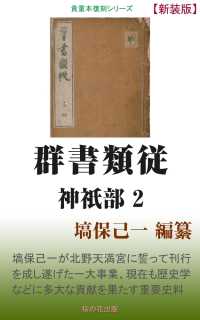- ホーム
- > 洋書
- > 英文書
- > Politics / International Relations
Full Description
This book analyzes when, how, why, and to what effect China has used its armed forces in recent decades to coerce other actors in the international system.
Over the past 20 years, China's international status as a "great power" has become undeniable. China's "peaceful rise" has included substantial investments in military modernization and an increasingly assertive regional posture. While China has not waged war since 1979, it has frequently resorted to what the U.S. State Department has referred to as "gangster tactics" - threats, intimidation, and armed confrontation - to advance its strategic aims. This volume illuminates the ways in which China has employed its military and paramilitary tools to coerce other states, and examines the motivations and specific foreign policy objectives that China has pursued using force short of war. The study presents new analysis of an original dataset on coercive actions undertaken by China's armed forces, taking into account the political objectives pursued and the environmental contexts in which these operations occurred. It also presents a series of expert case studies addressing the most consequential examples of China using force to coerce in recent decades. The volume contributes to a more historically informed, empirically based understanding of great power competition.
This book will be of much interest to students of Chinese security and foreign policy, strategic studies, Asian politics and International Relations.
Contents
1. To Win Without Fighting: Coercion in China's Military Strategy 2. China's Armed Coercion: Patterns and Rationale 3. Assessing China's Use of Armed Coercion 4. China Goes to War: Signaling and Intervention in Korea, India, and Vietnam 5. One China, Or Else: Military Escalation and Signaling in the Taiwan Strait 6. China and Japan: The Return of Rivalry 7. Conquering the Commons: Coercion in the South China Sea 8. On the Precipice: Crisis and Confrontation on the China-India Border 9. China's Multi-Domain Deterrence of the U.S. 10. Military Operations Other Than War (with Chinese Characteristics) 11. Conclusion Technical Appendix
-

- 電子書籍
- 群書類従 神祇部2
-

- 和書
- 川口美根子歌集ゆめの浮橋






